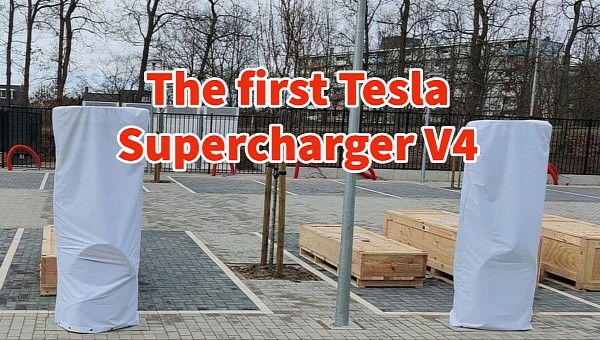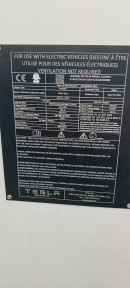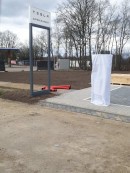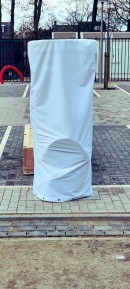News about the V4 Superchargers first surfaced last summer, when the Tesla community nailed many details that were confirmed much later. Now, the first Supercharger V4 chargers are installed in the Netherlands, and we have more information to share in regard to this.
Tesla made a huge step in promoting the electro-mobility by opening the Supercharger network to all other electric vehicles. For some, it was a godsend, as Tesla chargers proved more reliable than third-party stations. For others, mostly owners of cars with an 800-volt architecture, things didn't appear to be running as smoothly. Depending on the EV model and the manufacturing year, charging at a Tesla Supercharger is possible, but painfully slow or outright impossible.
Even vehicles sharing the same platform showed different personalities, as people complained on social media. Owners with older E-GMP cars like the early-production Hyundai Ioniq 5 would see an "unplug and try again" message as the car fails to communicate with the charger. However, the newer Ioniq 5 EVs and Genesis GV60 have no problem charging at a Supercharger station. As explained by Kyle Conner from Out of Spec Reviews, this is specifically because of the 450-volt chargers trying to feed 900-volt batteries.
To work correctly, the lower charger voltage needs to be converted to the higher battery voltage, which is done in-car by a DC-DC converter. This is power-limited, so that's why such EVs only charge at slower speeds, if at all. Hopes are that future Tesla Superchargers will offer 900-volt charging and play nice with all-electric vehicles on the roads. The V4 Superchargers are said to provide this capability, and they are first installed at the Tesla Supercharger station in Harderwijk, the Netherlands.
Based on the videos from the site, the V4 Supercharger stalls are indeed a lot higher than the V3 Superchargers. Nevertheless, the charging cabinets appear identical to the ones serving the V3 stalls, not just in size and appearance, but also in their electrical specifications. Based on the labels attached, the cabinets should still output 500 volts at 250 kW. Nevertheless, the Supercharger V4 chargers can aggregate two buses for 500 kW at up to 1,000 volts.
As rumored last year, the Supercharger V4 stalls would serve two V3-compatible cars simultaneously or one V4 at 500 kW/1,000 volts. It should also play nicer with the 900-volt EVs, although we'd still have to see it in order to believe it. Based on the progress at the Supercharger station in Harderwijk, it shouldn't take too long before it begins operations. Considering that the Supercharger network in the Netherlands is also open to non-Tesla EVs, we should see soon what happens when you plug a 900-volt car into the V4 charger.
Even vehicles sharing the same platform showed different personalities, as people complained on social media. Owners with older E-GMP cars like the early-production Hyundai Ioniq 5 would see an "unplug and try again" message as the car fails to communicate with the charger. However, the newer Ioniq 5 EVs and Genesis GV60 have no problem charging at a Supercharger station. As explained by Kyle Conner from Out of Spec Reviews, this is specifically because of the 450-volt chargers trying to feed 900-volt batteries.
To work correctly, the lower charger voltage needs to be converted to the higher battery voltage, which is done in-car by a DC-DC converter. This is power-limited, so that's why such EVs only charge at slower speeds, if at all. Hopes are that future Tesla Superchargers will offer 900-volt charging and play nice with all-electric vehicles on the roads. The V4 Superchargers are said to provide this capability, and they are first installed at the Tesla Supercharger station in Harderwijk, the Netherlands.
Based on the videos from the site, the V4 Supercharger stalls are indeed a lot higher than the V3 Superchargers. Nevertheless, the charging cabinets appear identical to the ones serving the V3 stalls, not just in size and appearance, but also in their electrical specifications. Based on the labels attached, the cabinets should still output 500 volts at 250 kW. Nevertheless, the Supercharger V4 chargers can aggregate two buses for 500 kW at up to 1,000 volts.
As rumored last year, the Supercharger V4 stalls would serve two V3-compatible cars simultaneously or one V4 at 500 kW/1,000 volts. It should also play nicer with the 900-volt EVs, although we'd still have to see it in order to believe it. Based on the progress at the Supercharger station in Harderwijk, it shouldn't take too long before it begins operations. Considering that the Supercharger network in the Netherlands is also open to non-Tesla EVs, we should see soon what happens when you plug a 900-volt car into the V4 charger.











